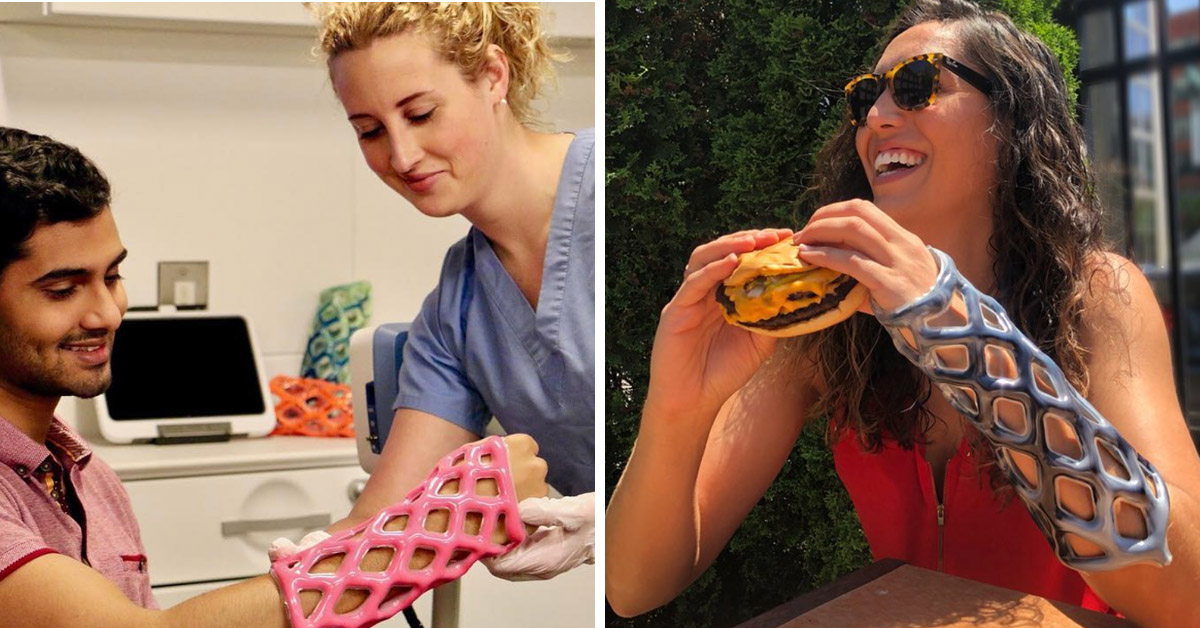Engineering Students Create Waterproof Cast That Actually Lets You Scratch Itches
If you’ve broken your arm, you know the long gross itchy process of wearing a plaster cast. You have to wrap it in a plastic bag when you shower, it grows increasingly grimy over the six weeks or so you have to wear it, and then the removal process involves a literal circular saw. It’s unpleasant, to say the least.
A Chicago-based startup called Cast21 is trying to change all of that with a revolutionary new design. Not only does it eliminate all of those plaster cast issues, it actually looks pretty cool:
View this post on Instagram
The mesh design was created by three University of Illinois college students named Jason Troutner, Ashley Moy, and Justin Brooks, who are biomedical design and electrical engineers, according to ZME Science.
The web-like structure of the cast is mathematically designed to be supportive enough for a broken bone’s healing process, while also maintaining access to the skin for things like scratching an itch or washing the surface. But it’s also lightweight, because the tubes forming the web are hollow.
View this post on Instagram
Veronica Hogg, Cast21’s vice president of engineering, told the Daily Mail that the design took into account that children are amongst the most frequent wearers of cast from broken bones, and the application and removal process of Cast21 is considerably less stressful than the plaster cast.
“The majority of fractures happen in children, adolescents and the elderly. Those saws are very loud and all this debris flies off and it’s very messy, it can be extremely frightening. The cast saw also presents a risk of burns to the patient.”
When it’s time to take a Cast21 cast off, all a doctor or nurse needs is a pair of clipping shears. With a few snips, the entire thing is easily removed.
View this post on Instagram
“We have this radical notion that you can enjoy your healing experience,” she said. “You don’t need to be restrained from daily activities.”
The sleeve is applied after a doctor measures the patient’s arm, then selects a flexible, lightly padded sleeve, which slides on. The sleeve s then filled with a patented liquid made of two resins. In about three minutes, the resin starts to harden into a malleable gel, which can be modeled to fit the arm more perfectly. In about 5-7 minutes after that, it hardens into a firm cast.
Eventually, Cast21 would like to have models that can span across the entire body, not just arms, and make casts that could be applicable for broken animal bones as well.
View this post on Instagram
“With the technology, we can also do a longer arm model or a model that goes up to the fingers as well,” said Hogg.
There is currently “no price” for a Cast21 mold, but they’re hoping to make it as accessible as possible.
“We want it to be competitive, and reachable to a large population,” said Hogg.

